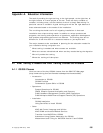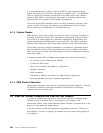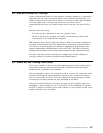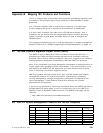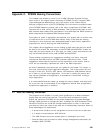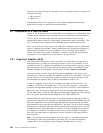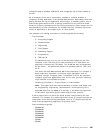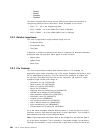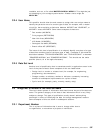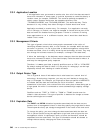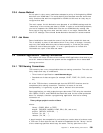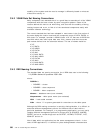
Appendix C. DFSMS Naming Conventions
This chapter was written by John Tyrrell of IBM′s Storage Systems Division.
John is one of the original senior architects of DFSMS. He also invented TMM
(Tape Management Methodology) and is the author of the Volume Mount
Analyzer program which is part of DFSMSdfp. He is the senior architect/inventor
of the DFSMS Optimizer product, one of the major components of DFSMS. John
interacts with a wide variety of IBM customers, and has personally been to over
600 customer data centers and participated in over 350 tape and DASD studies to
better understand and address IBM customer needs.
John spent 10 years in application development of a system with six million lines
of code which ran in over 60 IBM data centers. Many of the data set naming
techniques in this document were developed based on both John′s application
experience as well as working with IBM customers.
This chapter offers suggestions on the naming of data sets such that you would
be able to fully exploit the technology of both DFSMS and MVS/ESA. It does not
imply that you must rename all of your data, nor does it imply that these are the
only conventions that will work under DFSMS and MVS/ESA.
These naming conventions are suggestions resulting from many visits and
interactions with IBM internal and IBM customer application areas. These
suggestions reflect both the opinion and the experience of the author, and as
such, do not necessarily represent the view of the IBM Corporation.
As with all standards, they should act as a guide for the reader. The reader, in
this case, should really be the application designer. This is the person who will
set up all of the JCL, CLISTs, ISPF panels, JCL skeletons, JOB networks and so
on in order to run the major application. He or she is usually the person who
sets up the standards to be applied to all procedures involved with running a
major application.
It is recommended that the reader go through the entire chapter, and then build
his or her own set of rules based on the suggestions offered here as applied to
the particular application in question.
C.1 Data Set Naming Guidelines
The purpose of this chapter is to offer some guidelines as to what constitutes
proper data set naming conventions. This would allow customers to easily
exploit the functions of DFSMS for the proper assignment of System Managed
Storage (SMS) policies to manage the data. Although the ACS (Automatic Class
Selection) Routines will allow the Storage Administrator to filter on more than
just data set name, the name of the data set is fundamentally important. Some of
these advantages are listed below:
•
It allows more flexibility for the assignment of levels of service to data sets
•
It is easier to write/maintain ACS Routines
•
The ACS Routines are more durable (that is, meaningful over time)
•
Data set filters can be useful for other storage management techniques (for
example, ISMF, DFDSS)
Copyright IBM Corp. 1998 543



